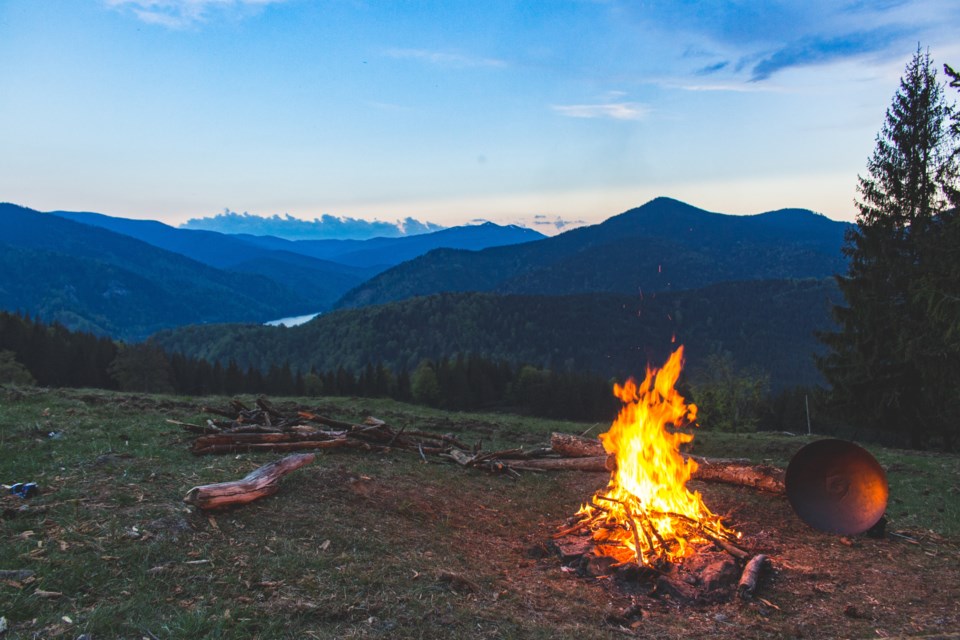Editor’s note: This story was originally published by Summit Daily News and was shared via AP StoryShare.
Warm weather, clear skies and long days means its time to get outside and into the forests around Summit County, but it also means it’s time to watch for wildfire risks. So how should campers, glampers and general gallivanters prepare for a weekend in the wilderness?
Members of Red, White & Blue Fire Protection District and Summit Fire & EMS answered some of those questions this week as Colorado enters into what state officials predict will be an “above-normal” year for wildfires. Local firefighters emphasized the need for personal responsibility — mistakes made in the backcountry can lead to devastating consequences and stricter fire regulations.
A day in the woods should begin with planning, whether you are camping, fishing, dirt biking or hiking. Those exploring Summit County’s natural areas should check local fire restrictions and fire danger levels before they venture out, Red, White & Blue Captain Matt Benedict said. Summit County currently has no restrictions, but that can change in a day. For that reason, Benedict said he recommends people check the region’s fire restrictions the day of their trip.
Signs above Interstate 70 will regularly display local fire restrictions to visitors as they enter Summit County. Regulations can differ between fire districts within the county, so Benedict recommends checking with local fire departments, too, and with the U.S. Forest Service if heading into the White River National Forest.
The Colorado Forest Service’s online interactive map, available at Co-Pub.ColoradoForestAtlas.org, displays fire protection district boundaries. Most Summit County destinations north of the Dillon Resevoir’s southern tip, including Keystone, fall into the Lake Dillon Fire Protection District, monitored by Summit Fire & EMS. Areas to the south along Colorado Highway 9 fall into Red, White & Blue’s district. Going south on Interstate 70 past Officers Gulch Pond enters Copper Mountain’s fire protection district.
A Stage 1 fire restriction in Summit County limits fires to established campgrounds and private residences, and the latter requires a valid permit from the fire district.
A Stage 2 fire restriction in Summit County prohibits any type of campfire, and requires any equipment with a flame to have an off switch. An outdoor wood-burning stoves are not permitted during a level two restriction, even if it is enclosed.
Of course, a wildfire risk is present even as outdoor enthusiasts travel to their destination. Chains dragging behind cars and campers trigger wildfires every season, Benedict said. Dry grass at trailheads combined with hot exhausts can also spark flames, Benedict added.
He cautioned people to be wary of where they park, as did Steve Lipsher of Summit Fire & EMS. They recommend sticking to established gravel parking areas and avoid parking in grassy areas since hot exhaust pipes and catalytic converters can ignite dry grasses. Not only will the grasses burn, but the car will, too, Lipsher said.
Once recreationalists arrive at their destination, there are more risks to watch for. Escaped campfires are the most common wildfire igniter, Benedict said. He warns campers to watch where they light their fires. Overhead trees, nearby deadfall and embers carried on the wind can all lead to fires. Often, he said, embers can drift from a fire without anyone noticing.
“If you’re going to have a fire, it’s your responsibility to figure out if we’re in fire restrictions first,” he said, and added campers should understand “we have a very flammable forest.”
Setting up a campfire in an appropriate place can make all the difference, he said.
And just because flames aren’t visible, doesn’t mean the fire’s been put out, he said. Campers should run their hands through the ashes cautiously and check for heat before declaring a fire “put out,” he said.
“If you’re going to have a fire, you need to have a way to put it out. You need to have a water bucket. You need to have a shovel,” Benedict said. “And then you actually need to use those products when you put it out. Stir up the fire, put lots of water on it and drown it. Put your hands in there and make sure there’s no more heat.”
“Use of a fire comes with responsibility,” Lipsher said. “Every year we get called out to unattended campfires. That’s mortifying.”
His advice? Pour water on the fire, stir it with a stick, pour water on it again and stick your hand in it cautiously.
Propane stoves are usually a safe option, Benedict said. Red, White & Blue has responded to fires resulting from stoves, but usually the cause is a faulty part, and the only thing on fire is the stove itself.


.jpg;w=120;h=80;mode=crop)
